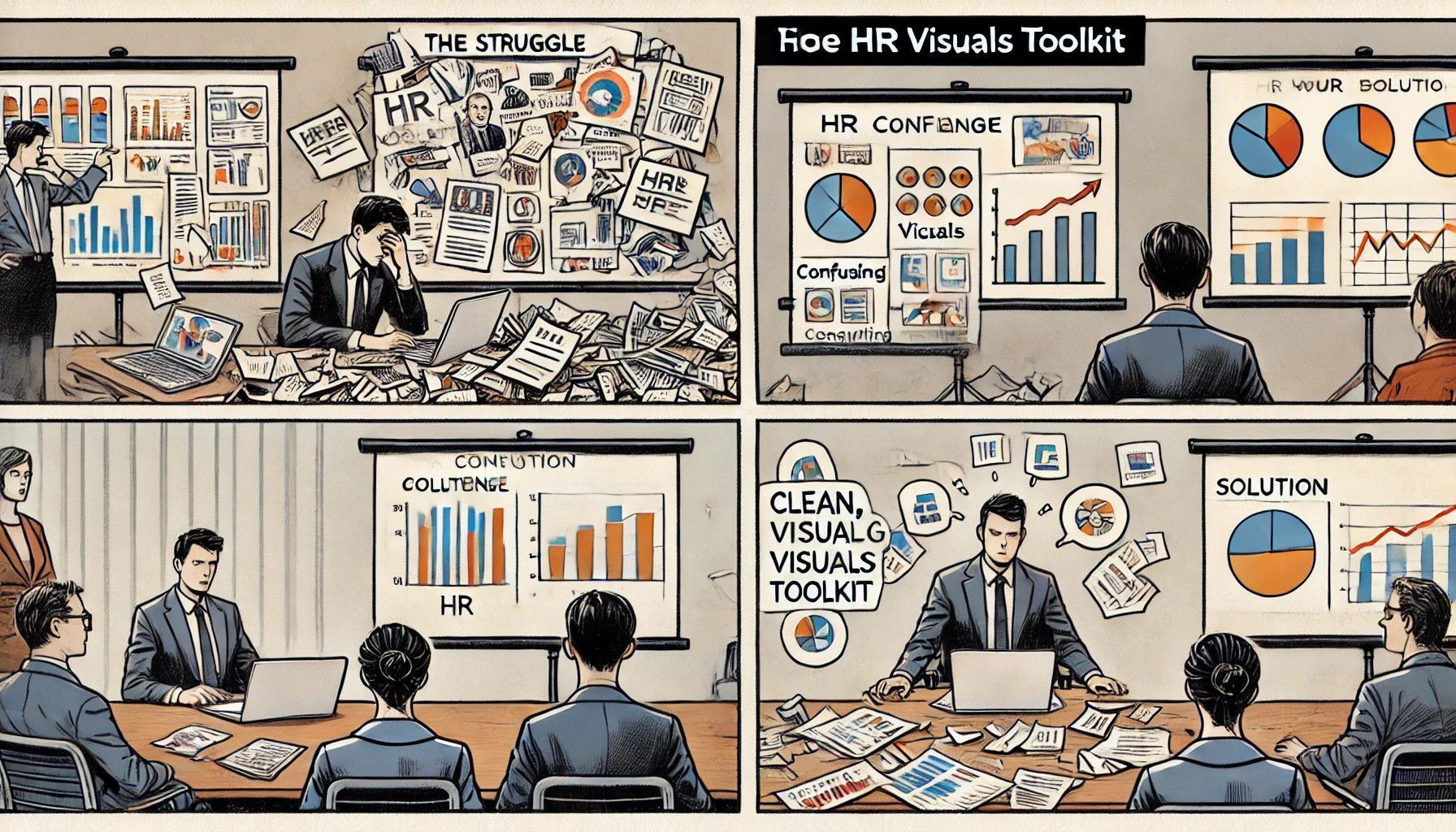+971522037900
mymail@mailservice.com
Is The War For Talent A Civil War?
This is a subtitle for your new post

If you're an HR professional, I'm pretty certain you're familiar with the phrase, "the war for talent". I've been hearing that phrase for at least 15 years, and somehow the war never seems any closer to being won. In this blog post I discuss how in many cases the "war for talent" is not a just a war against other companies for talent. It’s also a civil war against a company's own recruiting policies, processes and systems; The war FOR talent then becomes a war ON talent.
Let's start by focusing on the "Attract" phase. Then I'll follow on with the "Retain", "Release", and "Rebound" phases. Before I start, let me make a clarification. When I talk about talent, I'm not referring to every employee. I'm talking about high performing professionals. While it is true that all potential employees face the same obstacles, the reality is that companies that are simply after "warm bodies" to fill a position will always find someone willing to jump over their obstacle course seemingly designed by Bear Grylls, to get hired. Talented professionals, not so much. They can, and will find other options.
Here are some examples of how companies shoot themselves in the foot in their recruiting efforts. If your company is doing any of these things, take a long hard look at how you can change things, before complaining about the war for talent:
- Putting out a job post that reads like it's been copied and pasted straight from your job catalogue. Attracting talent through job postings is about marketing. Get your HR communications person to write the post. If you don't have one get someone in the business that can write engaging copy to do it. Heck, if you don't have that, get your hiring manager to describe what to he wants to an AI writer (like ChatGPT), and interface with your recruiting system. Just don't post the bland job description. The worst JD crimes are those filled with internal jargon, acronyms, and arcane references to proprietary systems.
- Talking about how progressive and innovative your business is, then in the same job posting (yes I have seen this) pointing out that candidates who haven't had a response in a specified period of time should consider themselves unsuccessful. Seriously?! If you're as innovative as you say you are, you can design processes and systems that will at least send some sort of response. These candidates have spent time and energy applying for the role, it's the least you can do.
- Excluding candidates for being over qualified - This exposes a transactional rather than a commercial mindset. What the recruiter is effectively saying is they don't believe in getting bang for their buck. Imagine going to a car dealer to buy a reasonably priced car, and the car dealer tells you that they've actually got a top of the range luxury car available at the same price. Would you turn it down?
- Choosing experience over skills and ability to learn - So often job postings, and even interviews focus disproportionately on previous experience. While this approach may have worked for a slower more predictable world of work, does it really work today? Should your primary focus be on previous experience at the expense of a candidates demonstrated ability to learn, their skills, and resilience? At the rate the world is changing, you will be hiring people perfectly adapted to a world that no longer exists. This push for experience also disproportionately impacts youth employment at organisations, since they have no experience to fall back on, but plenty of talent for today's technologies.
- Having everyone involved in the role doing an interview - So here's the thing. An interview is pretty much a candidates first and best introduction to what working with people at your organisation are like. Interviewing is a skill, so put your best interviewers (train people to interview properly!) in front of the talent you want to attract. It may be a controversial opinion, but the hiring manager does not always have to conduct an interview. I've heard the argument that the manager needs to ensure that the candidate is a good fit with the team etc. But if you're an organisation with clear values that employees practice, why would it matter if an interview is not done by the hiring manager? Don't get me wrong, they should absolutely meet for a chat or coffee to establish a human connection, but not an interview if the hiring manager is a poor interviewer. Remember the candidate will be an employee of your organisation and it's values, not an employee of the manager.
- Screeners that don't understand the role requirement - I'm sure you've all come across this in the past, and it usually happens at first interview. What happens is a recruiter has a list of key questions and key words to tease out a candidates suitability for the role. What can then happen is you may have a talented candidate that doesn't fit squarely in that box, or who asks questions beyond the scope of the "cheat sheet". They may be disqualified from the process, and a potentially great candidate is lost. It may be hard, but take some time to really understand the role, or better yet, especially for roles requiring specialist knowledge, have someone from the business rather than HR do the screening.
- Analytics - Are you tracking the effectiveness of your recruiting sources/channels, or the impact of the diversity of your hiring? By this I don't mean simplistic numbers of applicants by channel at the attract stage for example, but tracking the effectiveness of your hires for the organisation over time. It's difficult, but not impossible and could have a big impact on where you focus your recruiting efforts.
- Not embracing new technologies - AI, the metaverse, lead gen tools. If you're still relying solely on your ATS, internal referrals, and job posts on social media, you're missing out on new, potentially blue ocean recruiting channels that could help you reach talent before your competition start using these tools.
- Asking interviewees to go through many rounds of interviews. Sometimes up to 15 or more! By which time, the best talent has gone for another opportunity. If you can't make a hiring decision after a few rounds of interviews, then your system is broken!
If you think I'm being too harsh about your efforts in the war for talent, try this little experiment. Show your CEO a random job post from your organisation, and ask them to apply anonymously as a candidate for that job. It could be a very enlightening feedback mechanism.
Now lets focus on the "Retain" aspect of the war on talent. Retaining talent is arguably the most effective cost saving, revenue generating, aspect of the entire talent management cycle. It is also one of the most effective ways to grow a business, especially if as so many companies claim, people are their most valuable asset. I've never actually seen a valuation of that "most valuable asset" on an organisations balance sheet, but that's the subject of a separate blog post!
Think of it as akin to a business retaining customers. Studies suggest that it is 6 times more expensive for a business to win a new customer than retain an existing one. Also, a 5% increase in customer retention can lead to a 25-100% increase in business profits. Now imagine those numbers applied to talent retention, and it gives you a sense of why HR should focus so much on it.
Here's an example of what I mean. High turnover generally leads to high recruitment costs, and lost revenue due to productivity loss and onboarding. Additionally, employees leaving the business take their knowledge and network with them. Sometimes even customers are taken, despite the practice of issuing non-compete agreements. Below are some estimates of turnover cost. Try applying these to your turnover numbers to see where your company comes out. As you can see this can potentially cost a company millions of dollars.
- For entry-level employees, it costs between 30-50 percent of their annual salary to replace them
- For mid-level employees, it costs upwards of 150 percent of their annual salary to replace them
- For high-level or highly specialised employees, it can cost around 400 percent of their annual salary to replace them
If your company has millions of dollars to throw away on avoidable turnover, then maybe you don’t really need to invest in retention strategies, and this article is not for you. But the message is clear. It costs less to retain than it does to replace.
Let's look at some ideas for helping retain talent. Just to be clear, this is not an exhaustive treatment of the subject (that could fill a whole book!), but a collection of fundamental ideas to at least get you thinking on how to improve the employee experience and hence retention. In other words, I'm not going into details of how offering beer fridges or fussball on the office floor will help with employee retention.
Leadership
The culture of an organisation almost invariably begins with it's leaders. Regardless of whether the leadership feel they want to formally instil a particular culture, it will happen anyway. So why not deliberately create a winning culture? Some of the traits leaders can demonstrate to create a great culture include:
- Set a clear vision and strategy for the business that employees can work towards
- Set clear expectations of standards. Both what is acceptable, and not acceptable. Then be a living embodiment of those standards
- Look in the mirror, not out the window to apportion responsibility for poor results, never blaming other people, external factors, or bad luck
- Act with quiet, calm determination; relying principally on inspired standards, not inspiring charisma, to motivate
- Demonstrate an unwavering resolve to do whatever must be done to produce the best long-term results, no matter how difficult
Who not how
Having the right employees on the team goes a great way to ensuring there is a great employee experience, and low turnover. It's starts with ensuring the right people we brought on board in the first place. Here are some thoughts about having the right employees on board:
- Hire smart, motivated people with integrity, then get out of their way and let them succeed
- If you have hired the right people, the problem of how to motivate and manage people largely goes away. The right people don’t need to be tightly managed or fired up; they will be self motivated to produce the best results and to be part of creating something great
- Generally hire for will rather than skill. Specific knowledge and skills are teachable traits. Traits such as integrity, work ethic, basic intelligence, dedication to fulfilling commitments, and values are more ingrained. If people join primarily because of ingrained knowledge, what happens if you need to change direction? You’ve got a problem if they are inflexible learners
- The moment you feel the need to tightly manage someone, you’ve made a hiring mistake, or one of you is effectively a redundant resource. The best people don’t need to be managed. Guided, taught, led – yes, but not tightly managed
- The only way to deliver to the people who are achieving is to not burden them with the people who are not achieving. Letting the wrong people hang around is unfair to the right people, as they inevitably find themselves compensating for the inadequacies of the wrong people. Conversely, waiting too long is equally unfair to the wrong people. For every minute you allow a person to continue, knowing they will not make it in the end, you’re stealing time that they could spend finding a better place where they would flourish
- Before moving people (especially if they are talented) out of the organisation, it’s worth trying them in two or three other positions in the company where they might blossom. Make sure you don’t simply have the right person, but in the wrong role
- Put your best people on the biggest opportunities, not the biggest problems
Compensation and Performance
Study after study has shown that while employees that leave generally earn more in their new companies, higher compensation is not the primary driver in their decision to leave. However, if your employee experience is such that compensation is the only benchmark that employees have to compare with another employer, then compensation takes on added importance. Here are some thoughts on compensation and performance as a driver to retention:
- Make sure your performance management structure aligns to your company goals. For example, don't expect an innovative culture if there is a bigger risk than reward to employees that attempt innovation and fail, than to those that stick to the status quo and achieve their goals
- The evidence does not support the idea that the specific structure of executive compensation acts as a key lever in retention. Once you’ve structured something that makes basic sense, executive compensation falls away as a distinguishing variable.
- Compensation and incentives are important, but for very different reasons in great companies. The purpose of a compensation system should not be to get the right behaviours from the wrong people, but to get the right people in the first place, and to keep them there
- Pay for performance is often spoken about, but rarely adequately implemented. A large part of that comes down to inadequate analytics and methods to measure performance, whether team or individual. An annual performance review is not that tool.
Values and culture
I've deliberately put values before culture, because i firmly believe that values should build culture, and not the other way round. These are my thoughts on values:
- Hiring the "right cultural fit" is often used as an excuse for hiring "people like us" i.e. people that we are comfortable with. The net effect is that a company starts to trend towards homogeneity of thought, image, action and more. Much better to define your company values, and hire against those. Not everyone that shares a set of values also fits a cultural norm
- Create a climate where truth is heard. When employees feel they are being listened to, they perform better and are less likely to leave. This not only means providing a safe space for employees to be heard, but also following up with actions that demonstrate that they have been listened to
- While it's important to hire from the outside to bring in new ideas, a bias to hiring and promoting from within (assuming you have the right internal people) helps to reinforce your core values
Finally, let's focus on arguably the two most ignored aspects of talent management - "Release", and "Rebound".
Companies and HR departments often overlook the importance of the employee exit process. When employees leave a company, it is critical to provide a positive experience for the benefit of both the departing employee and the business. After all, these employees are potential advocates, and customers for the business. Unfortunately, many companies and HR departments get this process wrong, and treat departing employees as "persona non grata".
One common mistake is treating the employee exit process or offboarding as a mere transaction. Employees who have dedicated their time and effort to a company deserve a respectful and supportive farewell. Rushing through paperwork, conducting cursory exit interviews, or skipping them altogether, and failing to acknowledge the employee's contributions can leave a lasting negative impression. This not only damages the relationship with the departing employee but also creates a sense of unease among the remaining workforce who may worry about their treatment when they eventually leave the company.
Another mistake is failing to gather valuable feedback from departing employees. Exit interviews are an opportunity to understand the reasons behind an employee's departure and identify areas for improvement within the business. However, these interviews are often conducted hastily or not at all. By neglecting to learn from departing employees, companies miss out on valuable insights that can lead to positive changes and better employee retention in the future. Make the process bad enough, and you will start to get a reputation in the talent market that will impact your ability to attract the best talent.
To improve the employee exit process, companies should focus on creating a positive experience for departing employees. This can be achieved by providing clear and transparent communication about the exit process, ensuring the employee feels supported throughout their departure. HR departments should take the time to conduct thorough exit interviews, listening attentively to the employee's experiences, concerns, and suggestions. This feedback can help identify areas for improvement and foster a culture of continuous growth within the company. Finally, if you've gone to all the trouble of gathering this information and feedback, do something about it!
Exit interviews are all well and good, but companies need to embrace a concept of offboarding which goes beyond administrative tasks. An employee experience focused offboarding also involves actively assisting employees in transitioning to their next career steps, whether it be providing career coaching, networking opportunities, or recommendations. By offering this support, companies not only leave a positive impression on departing employees but also enhance their reputation as an employee-centric organization.
Companies should also recognise and celebrate the departing employee's contributions. By acknowledging their work, expressing gratitude, and providing opportunities for them to say goodbye to colleagues, companies can ensure that the employee leaves on a positive note. This, along with enrolling them into an effective alumni community, helps maintain a healthy relationship between the former employee and the company, encouraging potential referrals, sales, and potentially even boomerang hires in the future.
So let's talk a little about boomerang hires, because it's an area where so many companies fail to recognise the opportunity. When someone leaves a company, it's not usually personal (at least not towards the HR team), so don't take it personally! Most companies make a new employee go through a probation period for the first 3 to 6 months of their career. This period is when a new employee is most likely to have doubts about their decision to join as they realise the grass isn't always greener. This represents a great opportunity for the previous employer to nurture the employee and potentially rehire them - assuming they are a regretted resignation. You get a trusted, known resource without having to go to the talent market and source an unknown quantity. It costs half as much to re-hire an ex-employee as it does to hire a brand new person. Rehires also tend to be about 40% more productive in their first quarter at work and tend to stay longer at the job. Research suggests that the average Fortune 500 company can save $12 million a year by focusing on rehires.
Let's finish off by talking about Alumni programs. Just to clarify, when I'm talking about alumni programs, I don't mean the ones where ex-employees are enrolled with minimum engagement (offline or online), and only get sent news about company achievements and news. This kind of approach leaves ex-employees wondering; What's In It For Me!
First of all, an alumni network helps with hiring, making it easier for “boomerang” employees to return for another tour of duty after an absence from the company. An ex-employee will be more interested in returning if the company stays in touch and nurtures the relationship after they leave.
Alumni can also be contracted for specific consulting assignments or gigs. They know the company, its processes, and ways of working. It's a win-win because the time to get up to speed on specific company knowledge is vastly reduced. Alumni get consulting opportunities that might turn into full-time gigs while the company gets a highly qualified pool of potential consultants whom it knows are a good fit.
A well constructed alumni program can also be a great source of talent referrals. We all know that recruiting great people is expensive. An alumni network that generates even a few hires a year is easily worth the value of nurturing the network. Referrals don't have to be limited to talent, since alumni can act as promoters for your corporate brand in addition to your talent brand. You can make it easier for your alumni to refer customers through the community.
So we've "finally" come to the end of this blog. I hope you've learned that The "War ON Talent" doesn't need to be a civil war .
21st Century HR

All Rights Reserved | MData Consulting





